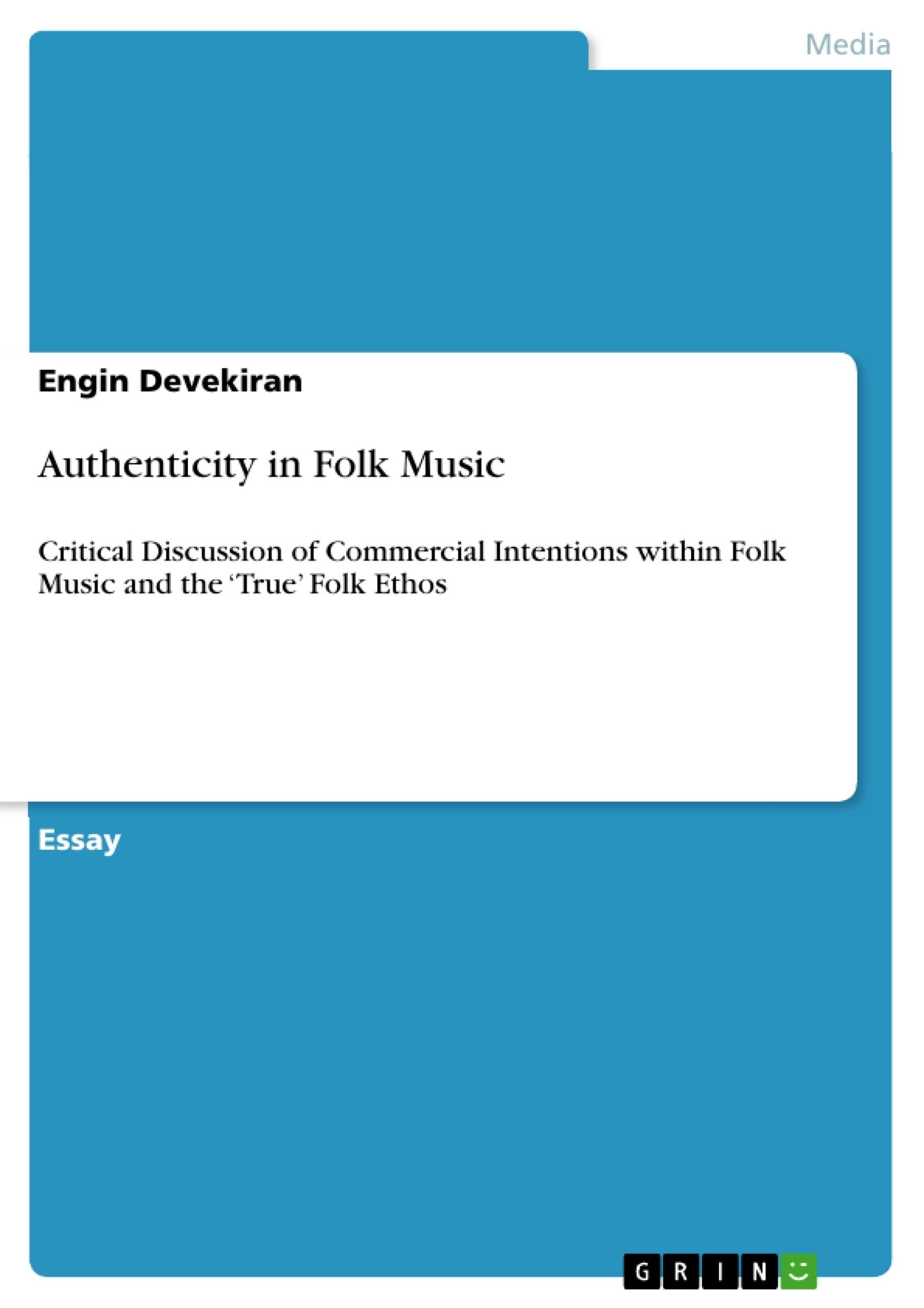What is it in particular that created the impression that folk music is so much more authentic than pop music?
In the end, the all-embracing question must be the one of authenticity in music, a very complex issue in rock and pop music. To understand the reaction of the audience the day Bob Dylan went electric, it is crucial to examine the roots of folk music, to comprehend its relationship with social change during the 60’s and to point out where the glorified importance of ‘being authentic’ in folk music came from. Having collected such information, it shall be possible to have a balanced view on the statement in the headline.
Folk music, in a very historical sense, is ‘music, usually of simple character and anonymous authorship, handed down among the common people by oral tradition’. Examples of ‘true’ folk songs would be sea shanties or camp-meeting songs. These roots in traditional storytelling are of big importance, because, for unlike pop music, folk for the young adults in the 1950s-60s was held up as ‘the authentic voice of the people’ (Barker & Taylor, 2007).
Inhaltsverzeichnis (Table of Contents)
- Authenticity in Folk Music
- What is folk music?
- The roots of American folk music
- The folk revivalists
Zielsetzung und Themenschwerpunkte (Objectives and Key Themes)
This essay critically discusses the commercial intentions within folk music and the 'true' folk ethos. It explores the roots of folk music, investigates the role of authenticity in the genre, and analyzes the impact of commercialization on the folk revival movement.
- The concept of authenticity in folk music
- The relationship between folk music and social change
- The impact of commercialization on folk music
- The role of the folk revival movement
- The cultural and historical significance of folk music
Zusammenfassung der Kapitel (Chapter Summaries)
- Authenticity in Folk Music: This chapter introduces the central theme of authenticity in folk music and explores the conflicting perspectives on its role in the genre. It examines the historical context of folk music and its evolution over time.
- What is folk music?: This chapter delves into the definition of folk music, exploring its historical origins and traditional characteristics. It also contrasts folk music with pop music, highlighting the perceived differences in authenticity.
- The roots of American folk music: This chapter examines the development of American folk music, tracing its origins and influences. It explores the cultural context of early American folk music and its relationship to social change.
- The folk revivalists: This chapter focuses on the folk revival movement of the 1950s and 1960s, examining its motivations, cultural impact, and relationship to commercialization. It also explores the role of artists like John Hurt and Bob Dylan in the movement.
Schlüsselwörter (Keywords)
Folk music, authenticity, commercialization, social change, folk revival, Bob Dylan, John Hurt, American music, blues, pop music, traditional music.
- Arbeit zitieren
- Engin Devekiran (Autor:in), 2016, Authenticity in Folk Music, München, GRIN Verlag, https://www.grin.com/document/345470



